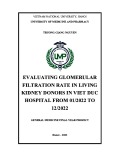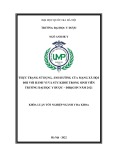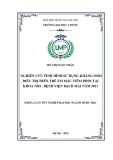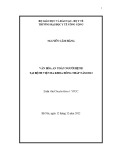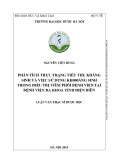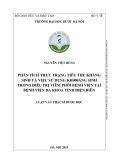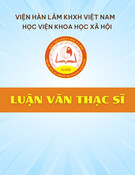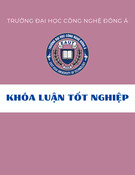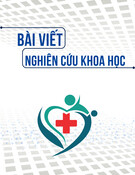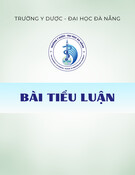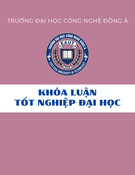
RESEARC H Open Access
The creation of the health consumer: challenges on
health sector regulation after managed care era
Celia Iriart
1*
, Tulio Franco
2
, Emerson E Merhy
3
Abstract
Background: We utilized our previous studies analyzing the reforms affecting the health sector developed in the
1990s by financial groups to frame the strategies implemented by the pharmaceutical industry to regain market
positions and to understand the challenges that regulatory agencies are confronting.
Methods: We followed an analytical approach for analyzing the process generated by the disputes between the
financial groups and the pharmaceutical corporations and the challenges created to governmental regulation. We
analyzed primary and secondary sources using situational and discourse analyses. We introduced the concepts of
biomedicalization and biopedagogy, which allowed us to analyze how medicalization was radicalized.
Results: In the 1990s, structural adjustment policies facilitated health reforms that allowed the entrance of
multinational financial capital into publicly-financed and employer-based insurance. This model operated in
contraposition to the interests of the medical industrial complex, which since the middle of the 1990s had
developed silent reforms to regain authority in defining the health-ill-care model. These silent reforms radicalized
the medicalization. Some reforms took place through deregulatory processes, such as allowing direct-to-consumer
advertisements of prescription drugs in the United States. In other countries different strategies were facilitated by
the lack of regulation of other media such as the internet. The pharmaceutical industry also has had a role in
changing disease definitions, rebranding others, creating new ones, and pressuring for approval of treatments to
be paid by public, employer, and private plans. In recent years in Brazil there has been a substantial increase in the
number of judicial claims demanding that public administrations pay for new treatments.
Conclusions: We found that the dispute for the hegemony of the health sector between financial and
pharmaceutical companies has deeply transformed the sector. Patients converted into consumers are exposed to
the biomedicalization of their lives helped by the biopedagogies, which using subtle mechanisms present
discourses as if they are objective and created to empower consumers. The analysis of judicialization of health
policies in Brazil could help to understand the complexity of the problem and to develop democratic mechanisms
to improve the regulation of the health sector.
Background
As we demonstrated in our previous study the worldwide
domain of financial capital, which has been increasing
since the middle of the 1970s, defined the reforms of the
health sector in the decades that followed [1-5]. Insurance
companies and administrators of mutual and pension
funds expanded their business opportunities by not only
moving into different countries but by also entering into
new economic sectors, such as health. At the end of the
1980s and beginning of the 1990s the flows of financial
capital into the health sector increased exponentially [1].
This process occurred first in the U.S. and after in many
developed and developing countries, introducing new
social actors, new rules, and new insurance models that
have direct impact on the management and provision of
health care services. Insurance companies had operated in
the health sector before, but their operations were limited
to selling life insurance policies and health insurance
plans, mostly to individuals. The radical financialization of
the world economy in the 1990s, supported by U.S. poli-
cies that deregulated the financial markets, opened the
* Correspondence: ciriart@salud.unm.edu
1
Department of Family and Community Medicine and Robert Wood
Johnson Foundation Center for Health Policy, University of New Mexico,
MSC09 5060,1 University of New Mexico, Albuquerque, NM 87131-0001, USA
Full list of author information is available at the end of the article
Iriart et al.Globalization and Health 2011, 7:2
http://www.globalizationandhealth.com/content/7/1/2
© 2011 Iriart et al; licensee BioMed Central Ltd. This is an Open Access article distributed under the terms of the Creative Commons
Attribution License (http://creativecommons.org/licenses/by/2.0), which permits unrestricted use, distribution, and reproduction in
any medium, provided the original work is properly cited.

doors for corporate groups to intensify their operations
worldwide using new non-regulated financial tools [6].
During the late 1980s and 1990s, pharmaceutical com-
panies and health professionals were impacted by the
managed care model of containing costs. The increased
hegemony of financial capital in the health sector
required changes in the way that business was con-
ducted. The business model traditionally followed by
health providers and the producers of drugs, devices,
and equipment depends upon increasing consumption
of health services and treatments. The pharmaceutical
industry focused on health professionals, especially phy-
sicians, to create or increase the demand for its pro-
ducts. The financial groups administrating private,
public, and employer-sponsored health plans have an
opposite model. These companies realize more profits
by cutting access to services and treatments, especially
the more costly ones. For this reason, managed care
organizations developed strategies to control costs using
administrative procedures to limit physicians’prescrip-
tions and referrals.
At the beginning of the 1990’s, financial groups oper-
ating in the health sector introduced explicit and silent
reforms following the U.S. model of managed care in
several countries in Latin America, Asia, and Europe [2].
By silent reforms we mean changes in rules related to
the health sector operation and/or conceptualization
that most of the time avoids the legislative process and
moreover, the public debate [3].
In Latin America and other developing countries,
structural adjustment policies and neoliberal ideology
createdthecontextforhealthreformsthatallowedthe
entrance of multinational financial companies into pub-
licly financed programs and employer-based insurance
[4,5]. Later, financial capital entered into the manage-
ment of health care services: hospitals, home care, long-
term care, nursing homes, etc. [7].
In the health sector the massive entrance of financial
capital changed not only the modus operandi at the eco-
nomic level but also the common sense regarding the
ideas about health-ill-care. By common sense we refer
to core ideas that underlie discourses on health in a spe-
cific time and society. Common sense is shared meaning
that provide direction for society, and act as social
cement that fills gaps and artificially softens social con-
tradictions. Common sense shapes the subjective assess-
ment of a shared situation by people in different places
in the social structure (p. 55) [3]. Cost containment,
individual responsibility, cost-effectiveness, case manage-
ment of patients, coordination of care, etc. are technical
concepts that penetrated the sector and deeply trans-
formed the conceptualization of health-ill-care. Profes-
sional decisions were subordinated to administrative
procedures which focused on maximizing profits
masked most of the times as decisions based on scienti-
fic evidence.
From our previous study it was clear that the adminis-
trative model implemented by the financial groups con-
trolled expenditures limiting access to health services
operating in contraposition to the interests of the medical
industrial complex. The next step in our research agenda
was to understand if the most powerful group of the
medical industrial complex, the pharmaceutical industry,
has remained quiet while the corporate groups managing
financial capital were increasing their shares of the health
market. We observed that as a consequence of the mas-
sive adoption of managed care in the U.S. and other
countries, the pharmaceutical arm of the medical indus-
trial complex has developed health reforms, most of
them without public debate, to regain market share and
authority in defining the health-ill-care model [8]. These
silent reforms radicalized the medicalization, now defined
by some authors as biomedicalization [9]. Some reforms
took place through deregulatory processes such as weak-
ening the regulation regarding direct-to-consumer adver-
tisements of prescription drugs in the United States.
Others were developed more silently. This was the case
of the hidden role, through paid experts, that the phar-
maceutical industry has had in changing disease defini-
tions, developing clinical guidelines for diagnosing new
diseases or overdiagnosing others, and pressuring for
approval of treatments to be paid by public systems and
employer-based and private insurances. However, the
most successful strategies were focused on converting
patients into consumers.
In other countries, different strategies are facilitated by
the lack of regulation of other media instruments, such
as the internet. Disease campaign awareness and funding
of medical scientific and educational activities are also
used to hide the promotion of drugs. In recent years we
have observed in Brazil a substantial increase in the
number of judicial claims demanding that private insur-
ance and public administrations pay for non-approved
treatments, including the experimental ones. This could
be a strategy to regain market power in countries with
health care systems led by public administrations, not
driven by the market. These strategies could have ser-
ious consequences for the regulatory process of the
health sector.
The article will first present the strategies utilized by
the pharmaceutical industry to regain market leadership
in the United States. We consider it important to ana-
lyze the changes operating in this country because the
U.S. medical model influences the conceptualization and
practice of medicine in the rest of the world, especially
in developing countries. Second, we will analyze some
contributions from the social sciences that allow a better
comprehension of the phenomenon of the creation of
Iriart et al.Globalization and Health 2011, 7:2
http://www.globalizationandhealth.com/content/7/1/2
Page 2 of 12

the health consumer as part of the biomedicalization led
by the medical industrial complex. Finally, we will intro-
duce the research that our team is conducting in Brazil
analyzing if the judicial mandates obligating the public
health system to financially cover new treatments are
part of the strategies of the pharmaceutical industry to
create the health consumer and the impact that the
mandates have on the regulation of the health sector.
Methods
The study followed an analytical approach that reinter-
prets studies developed by other authors regarding the
reforms that the pharmaceutical industry has developed
during the past 20 years. The results of our study about
the managed care reforms provided the knowledge that
the financial groups developed strategies to control pro-
viders of health care services in order to decrease expen-
ditures. The study analyzed the ideological mechanisms
and the practices developed by financial groups and
other central actors in the health sector to change com-
mon sense about the conceptualization of health-ill-care,
including the idea that patients/users should be trans-
formed into consumers/clients [4]. In the light of these
processes, new questions arose: will the medical indus-
trial complex, and particularly the pharmaceutical cor-
porations, counter attack these reforms to regain market
power and hegemony in defining the medical model?
What kind of strategies will they implement if their tra-
ditionally targeted groups (health care providers) were
controlled by the strategies of the managed care groups?
To respond to these questions we used theoretical
concepts and research methods in the Foucaultian
meaning of “toolboxes”[10]. This resulted in the utiliza-
tion of theoretical concepts and research methods from
different authors, and not unique approaches with the
pretension to produce completed explanations about
the analyzed situation. We looked for concepts with the
potential to discover new interpretations and new dis-
courses. In this direction, we utilized some concepts
that proved their analytical power in other studies that
we conducted, such as common sense and silent
reforms. We found new ones, especially biomedicaliza-
tion and biopedagogies, which we considered have the
potential to bring new meanings to the analyzed
situation.
Several methodological approaches were useful for
creating a dialog between different sources of data. We
will mention two as the most important to our study: a)
situational analysis that provides elements to map differ-
ent discourses and, b) discourse analysis which we used
as a deconstructive reading and interpretation of power
relationships to gain a comprehensive understanding of
the effects of these dynamics in creating new subjectiv-
ities [10,11]. We are not trying to provide unequivocal
answers, but to reinterpret some strategies by connect-
ing different processes that appear disconnected in the
discourses elaborated by the two most powerful groups
operating in the health sector -the medical industrial
complex and the financial groups. We understand
power as multiple forces operating in a specific situation
and time. Power is related to the concept of governabil-
ity in the meaning of forces operating strategically to
structure new subjectivities [12].
The fundamental idea was to understand what the
pharmaceutical industry was doing to counter attack the
advances of the financial groups. To initiate the research
process we followed Rabinow’s idea of utilizing a tradi-
tional ethnographic method “to describe what is going
on”(p. 236) [12]. As a first step, we defined the macro
situation as the intercapitalistic disputes between the
medical industrial complex and the financial groups
operating in the health sector for increasing the share of
the market and defining the medical model. At meso
level we were interested in understanding if pharmaceu-
tical groups were developing strategies to change regula-
tions to impact the organization of the health sector. At
micro level we wanted to learn if the pharmaceutical
industry was also creating some mechanisms to recap-
ture the supply side of the health care sector equation
and/or developing mechanisms to capture the demand
side (patients/users).
We developed a non-systematic data collection and
analysis following the ethnographic method of observing
and analyzing data/information to widely describe the
situation [12]. Following Clarke, we can define our study
as a multisite/multiscape research, in the meaning that
we examined multiple kinds of data from a particular
situation of inquiry (p. 165) [11]. We utilize data from
different sources, such as articles, news, or other data
from list servers, materials researched for our teaching
and other research activities, as well as, data and new
insights of the situation gather by participating in
national and international forums related to health sec-
tor reforms. The initial materials gathered opened other
pathways to obtain additional data, such as references to
articles, names of companies, and individual and collec-
tive social actors involved in the situation, and descrip-
tion of regulations, among others. In addition, we
cannot deny that our personal experiences receiving
information as consumers from pharmaceuticals were
also an important source of data and inquiry. As
researchers we are part of the situation as subjects that
produce discourses about the situation, but also sub-
jected to discourses that others produce [13].
The extensive preliminary analysis allowed us to
notice that pharmaceuticals were turning to their favor
the strategy initiated by managed care organizations of
transforming patients/users into clients/consumers.
Iriart et al.Globalization and Health 2011, 7:2
http://www.globalizationandhealth.com/content/7/1/2
Page 3 of 12

From the preliminary analyses we also understood that
the pharmaceutical industry was taking part in a silent
process of health reforms to regain market power that
impact different levels: policy, economic, ideological,
and social. In addition, the team was interested in
understanding how the process operates at macro,
meso, and micro levels. The separation into these levels
had only methodological purposes; the process is intri-
cate and operates most of the times simultaneously at
all levels. We decided that the line of analysis that will
allow a wide and deep comprehension of the process
will be through the utilization of analytical categories
that capture the reforms that pharmaceutical companies
were involved in and benefit from. The broad categories
that we defined were changes in regulations, changes in
defining, branding and overdiagnosing diseases, and
mechanisms utilized to capture the demand side. Com-
plementing this process, part of our team started a lit-
erature review to describe the increasing involvement of
the judicial branch in the regulatory process in the
health sector in Brazil.
Using these categories, we developed a systematic lit-
erature and document review to find the data (primary
and secondary) that describes changes in regulations
and scientific norms, and in business models consistent
with the creation of health consumers. With the docu-
ments identified from different sources (academic arti-
cles, books, brochures, websites of professional, patient
and consumer associations, adds and news in television,
magazines, and newspapers, among others), we initiated
a process of mapping the information obtained in each
category from different sources to describe the situation
and the results of the changes in creating the health
consumer and radicalizing the medicalization. We fol-
lowed the procedures described by Clarke and we
recommend her book to learn about the operational
steps that we will not present here because an in-depth
explanation of these complex methods merit a separate
article [11].
The result of the process was the analytical descrip-
tion of selected strategies implemented by the pharma-
ceutical industry and their reinterpretation applying the
theoretical concepts of biomedicalization and biopeda-
gogies. This reinterpretation allows us to increase the
understanding of the effects that the discourses cur-
rently modeling the health sector have in creating new
subjectivities and biosocialities, some of them as part of
the hegemonic discourse and others questioning it.
The study contributes to the field of health policy by
highlighting how silent reforms introduced first by
financial companies and after by the medical industrial
complex, are challenging the regulation of the health
sector. The described analytical approach allowed us to
reinterpret the situation and show the need for further
study of the hidden processes and social actors that
could be behind the judicialization of the health sector
in countries were health is considered a common good
not a commodity.
Results
The medical industrial complex: strategies to regain
market leadership
To revitalize its role in the health sector the pharmaceu-
tical industry needed to find new strategies [14]. The
strategies were selected to create a new disease/ill/care
model, make drugs for healthy people, and to exploit
the idea developed by managed care organizations to
convert users/patients into clients/consumers [15]. In
order to accomplish these goals, the industry has been
successfully lobbying for regulatory changes and in
developing strategies to change the common sense
related to the conceptualization of health-ill-care. We
will analyze some of these changes and strategies in the
following sections.
Changes in regulations
As a first step in converting patients/users into clients/
consumers, the pharmaceutical industry required some
changes at the regulatory level. Several laws and modifi-
cations of existing regulations were approved in the U.S.
that facilitated the transformation of the business model
of pharmaceutical companies. For this article we will
consider two important regulatory changes, one that
facilitated the increase of the number of pharmaceutical
products in the market, and another that enhanced the
ability of the companies to offer the products to consu-
mers. The first one is the act that introduced user fees
to be paid by pharmaceutical companies to the Food
and Drug Administration (FDA) to initiate the approval
process for new drugs. The second one is related to the
changes introduced on the regulation of the direct-to-
consumer advertisements.
Introducing user fees for drug approvals In 1992, the
U.S. Congress approved the Prescription Drug User Fee
Act (PDUFA) with relatively little public debate [14].
The Act allowed pharmaceutical companies to pay fees
to speed the approval process and the FDA the ability
to use these fees to finance the specific areas. After the
Act was launched, new approvals were being issued in
unprecedented numbers and review times were at his-
toric lows. Important new drugs for cancer, AIDS, heart
diseases, and stroke were approved using this process,
benefiting many patients. But also numerous new drugs
for chronic diseases, mental health and lifestyle condi-
tions, some of them not very useful or really new and
sometimes dangerous, were approved, opening a new
dimension for the pharmaceutical business. According
to Angell, in 2002 the FDA approved 78 drugs. From
those only 17 contained new active ingredients and just
Iriart et al.Globalization and Health 2011, 7:2
http://www.globalizationandhealth.com/content/7/1/2
Page 4 of 12

seven were classified by the agency as improvements
over existing drugs (p. 16-17) [16]. The speedy process
established in the U.S. determined that many pharma-
ceutical companies chose this country for the introduc-
tion of new drugs into the market more than any other
country in the world.
The approval of this Act has also had consequences in
other countries. The most important consequence was
that in 1990s the World Bank (WB) and the Inter-
American Development Bank (IADB) promoted, in sev-
eral Latin American countries, the creation of regulatory
agencies following the FDA model, especially the user
fee provision. The reasoning of the WB and IADB was
that the user fees will counter the fiscal deficit by gener-
ating revenues to finance the new governmental agen-
cies. Additionally, according to these international
lending agencies, the efficiency of the bureaucratic pro-
cess of drug approval will be improved. Argentina
(1993) and Brazil (1999) created the agencies to regulate
drugs, foods, and medical technologies following the
FDA model of charging pharmaceutical companies fees
to initiate an approval process [17,18].
Changing the rules for advertising drugs The new reg-
ulation speeding the approval process increased the
amount of pharmaceutical products in the market, but
additional strategies were required to increase the
demand of the products. The capture of the supply side
(providers) of the health care equation developed by
managed care organizations, mobilized pharmaceutical
companies to develop strategies to capture the demand
side. The industry envisioned the idea to convert
patients into consumers with the right to be informed
about pharmaceutical products as they have the right to
receive information about other goods and services [14].
For years medical associations and also pharmaceutical
executives opposed direct-to-consumer advertisements
(DTCA) of prescription drugs, arguing that it will inter-
fere in the physician-patient relationship. But during the
1980s the increasing power of consumer organizations
created the possibility of advertisements as a way to
empower patients [14]. This idea was captured by the
managed care industry to promote the concept that an
informed patient could make rational decisions about
their health needs and not be manipulated by prescribers.
Using this concept, innovators within the pharmaceutical
industry convinced those who initially questioned that
the DTCA of prescription drugs was a way to empower
patients. Also, they promoted the idea that the DTCA
will create more awareness about diseases and conditions
not well known, but which were silently affecting huge
number of people.
DTCA already was approved and regulated by the
FDA, but the requirements were that the advertisements
must present the entire list of side effects and cautions,
limiting the power of the promotion by scaring the pub-
lic. In 1997, the FDA rolled back this requirement and
it opened the way for a new era in DTCA [16]. Compa-
nies increased exponentially the amount of DTCA. In
2001, the big companies spent $1.8 billion in DTCA,
but in 2003 they spent $3 billion [14]. The regulatory
capacity of the agency is almost null to control this
increased amount of advertisements, especially if we
consider that in 2001 drug companies also substantially
increased the ads in newspapers and magazines, exceed-
ing largely the number of ads in medical journals for
that year. Drug companies are required by law to have
their DTCA reviewed by the FDA when they launch a
new campaign. However in 2001, the agency had only
30 reviewers to control 34,000 DTCA. In addition, the
agency cannot verify whether the companies submit all
the ads [19].
Most of the DTCA are for chronic and lifestyle condi-
tions, as well as behavioral/mental health problems. The
ads will train consumers about signs and symptoms, as
well as brand name medications, and direct them to
consult with their physicians. Perhaps, it would be more
appropriate to say, to convince their physicians about
the diagnosis and treatment. These advertisements are
now the biggest investment of pharmaceutical compa-
nies in marketing and include ads in television, radio,
magazines, internet, and mail advertisements, among
others. But more than providing useful information to
patients for specific health problems, the ads market the
diseases/conditions (old, new, and rebranded) for which
the pharmaceuticals have drugs to sell. The idea, pro-
moted by the new pharmaceutical paradigm, is not just
to sell pills to cure diseases, but to create a state of fear
of becoming sick, aging, and dying [15,20].
In other countries, pharmaceutical companies are
pressuring regulators to allow DTCA for prescription
drugs and to modify the classification of some drugs to
be sold over-the-counter. While drug companies are
waiting for regulation changes, they are using other stra-
tegies to reach consumers, such as media disease aware-
ness campaigns, promotion of drugs presented as news
in television and other media, and developing health
teaching materials for schools, among others. The cen-
tral idea is to increase the capacity of consumers to self-
diagnose and self-prescribe [21,22].
Changing health definitions, branding diseases and
overdiagnosing others
Since the middle 1990s, pharmaceutical companies have
had more influence within the expert committees
reviewing disease/condition definitions and describing
new diseases and health risks to be covered by private,
employer-based, and public insurance plans [16]. The
majority of these changes are defined by medical specia-
lists in committees organized by official agencies,
Iriart et al.Globalization and Health 2011, 7:2
http://www.globalizationandhealth.com/content/7/1/2
Page 5 of 12

